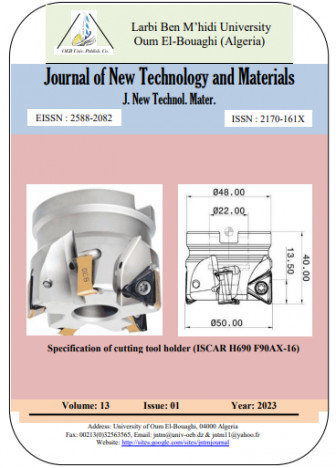Study of the electrical conductivity of poly (ethylene oxide) in different electrolytes
Keywords:
Poly (ethylene oxide) PEO, Electrolytes, Conductivity, Lithium ion battery, activation energyAbstract
The electric conductivity of systems without and based on poly(ethylene oxide) polymer of seven binary solutions (KCl,
NaCl, NaOH, LiCl LiBr, LiI and NaNO2-H2O) and ternary solutions based on halogenated lithium (LiCl, LiBr and LiI-
PEO- H2O) was considered as function of changes in concentration and temperature.
The experimental results revealed that the electric conductivity of solutions is influenced by the concentration, temperature
and the characteristics of the solute such as the anionic radius, mobilitiy and diffusion coeffient. At 18 ° C, the maximum
electrical conductivity was 7.01 S/m for an aqueous solution of poly(ethylene oxide) PEO / Lithium iodide (LiI at 0.1M) /
water. In addition, the electric conductivity decreased in the order: PEO / (LiI) / H2O> PEO / (LiBr) / H2O> PEO / LiCl -
H2O under the same conditions of concentration and temperature.
The activation energies of the ternary and binary systems are determined by the Vogel-Tamman equation -Fulcher (VTF).
Therefore, the solution of the ternary LiI-PEO-H2O system shows good potential as working solutions for Lithium ion
batteries considering its electrochemical and thermodynamic proprieties





